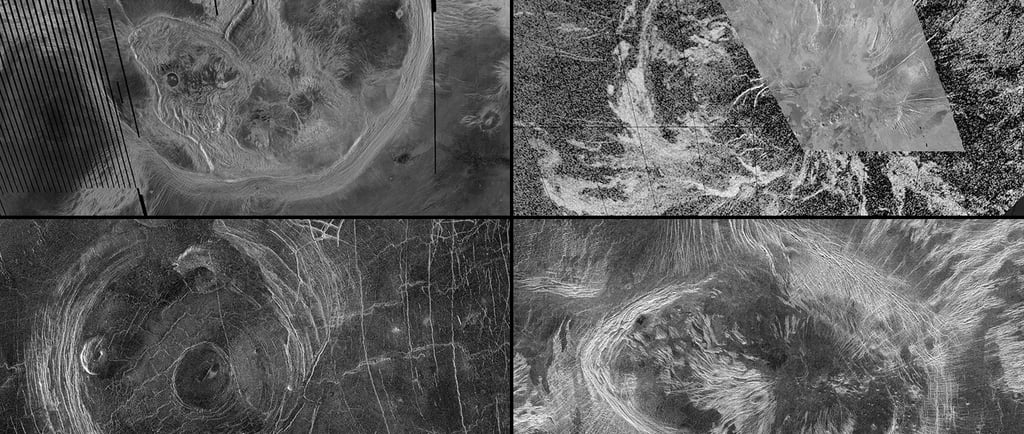NASA's Magellan Mission: Tectonic Activity on Venus


The Mysteries of Venus
Venus, often referred to as Earth’s twin due to its similar size and proximity, presents a starkly different environment. The planet’s surface, characterized by vast, quasi-circular features, has long intrigued astronomers and planetary scientists alike. According to NASA’s Magellan mission, these unique formations may provide profound insights into the geological activity beneath Venus’s thick, carbon dioxide-rich atmosphere.
The Evidence of Ongoing Tectonics
Unlike Earth, which boasts an active system of tectonic plates that reshape its surface continually, Venus operates under a different paradigm. The absence of tectonic plates doesn't imply a lack of geological activity; rather, the features observed on Venus suggest a dynamic surface that is still being deformed by molten material from below. NASA’s Magellan mission has revealed that these quasi-circular features, often termed ‘coronae’, may arise from processes reminiscent of tectonic activity.
Understanding the Formation of Coronae
A corona is characterized by a dome-like structure believed to be formed where warm, buoyant materials from the mantle force their way through the lithosphere. This activity leads to the uplifting and fracturing of the surface in a conspicuous manner. Upon closer examination, it becomes evident that these formations could indicate ongoing geological processes, challenging the longstanding belief that Venus has remained geologically inactive for millions of years.
Through the data gathered by the Magellan spacecraft, scientists have started to piece together a more complex narrative of Venusian geology. The planet's surface holds features suggesting that it is not merely a static world, but rather one with a still-active history shaped by processes similar to those seen on Earth, albeit without the same mechanisms of tectonic plates.
Studying these coronae helps researchers understand the internal workings of Venus. It provides a tangible connection to the mantle processes that are less observable on Earth due to our planet's tectonic recycling and surface weathering. Each quasi-circular feature is a promoter of curiosity, suggesting a history and evolution shaped by periodic upheavals of material from the mantle.
In conclusion, the ongoing research into the coronae and related geological features on Venus indicates that, while Venus does not possess tectonic plates, it is far from a geologically dormant planet. The findings from NASA’s Magellan mission highlight the importance of continuous observation and research into celestial bodies. As our understanding of planetary geology expands, Venus serves as a fascinating case study in planetary science, potentially allowing us to draw parallels with our own Earth and its ever-shifting surface.
